In pictures: Northern Ireland then and now
- Published
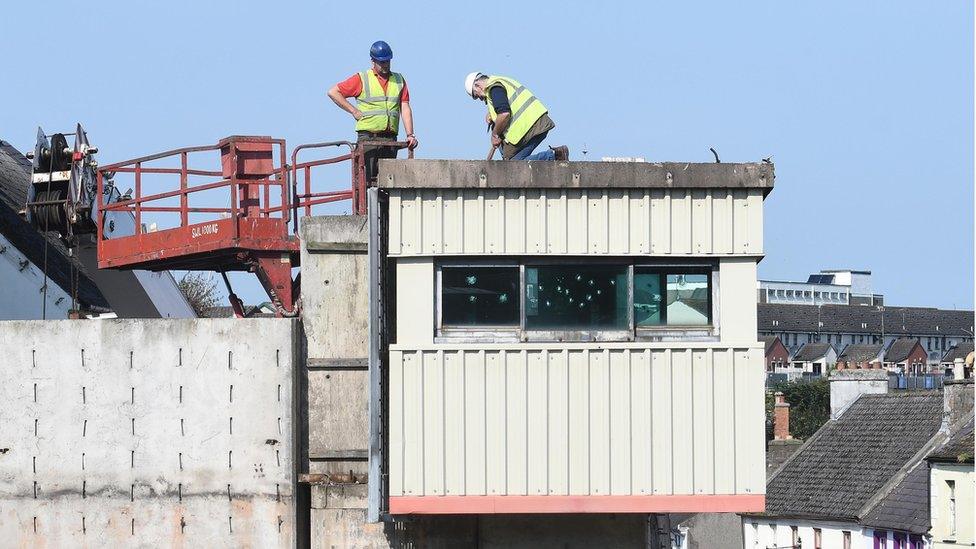
Demolition work to bulldoze the reinforced sangar and blast wall at the former Downpatrick PSNI station started last month
The recent removal of the Downpatrick sangar - or fortified observation post- shows how much Northern Ireland's political landscape has changed over the past 50 years.
BBC News NI looks at other physical changes in the landscape that reflect developments in the political sphere, through pictures of key landmarks from the Troubles.
CITY CENTRE SECURITY GATES
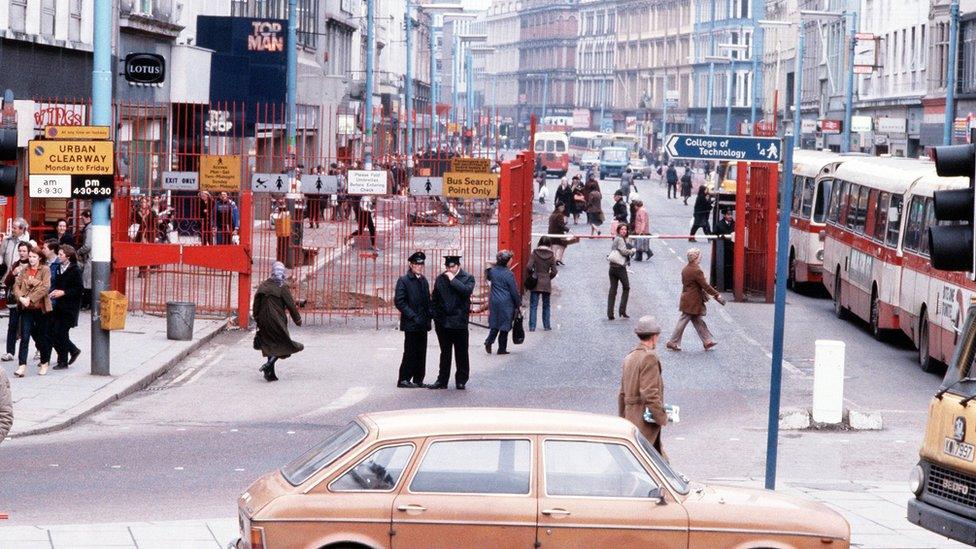
Bags would be searched for explosives by police. The gates would be closed every evening at 6pm.
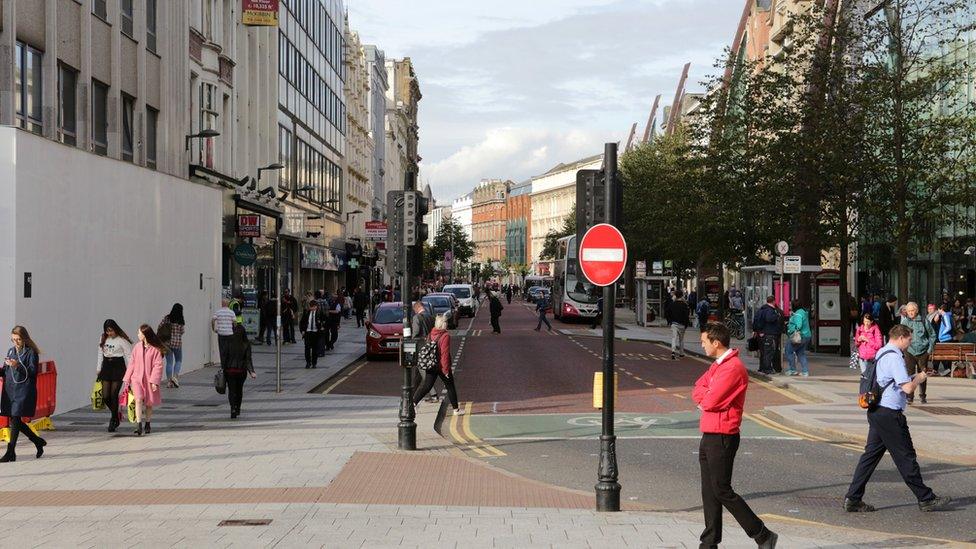
The city centre of Belfast has seen extensive redevelopment
During the Troubles, shoppers in Belfast had to pass through security gates to enter Royal Avenue, one of Belfast's main shopping streets.
Bags would be searched for explosives by police.
The security gates are long gone.
SANGARS

Borucki Sangar - watchtower Golf Five Zero - was a British Army base in Crossmaglen, County Armagh
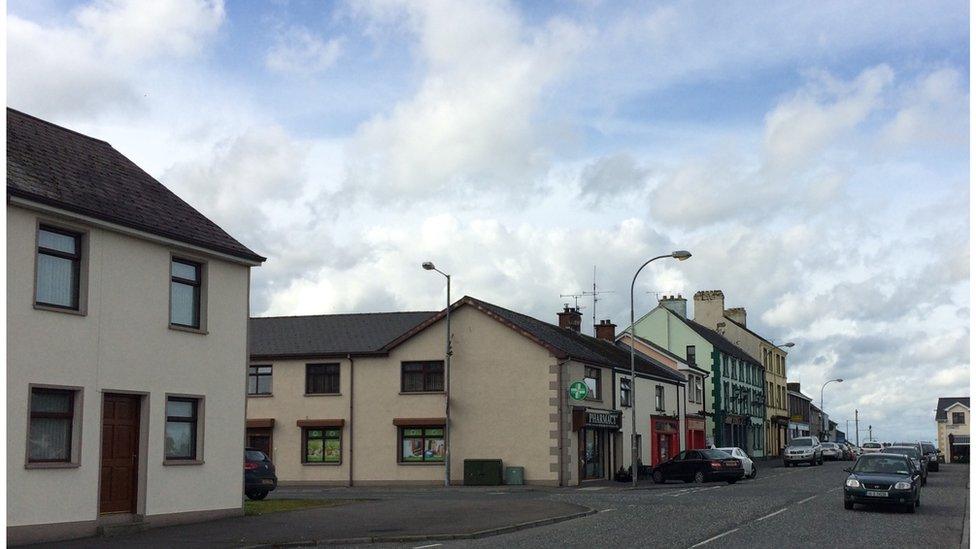
With Golf Five Zero dismantled the Crossmaglen street has recovered its normality
At the height of the Troubles, sangars were erected across County Armagh.
The fortified observation posts formed part of the British Army's defensive strategy to control the landscape and people of Northern Ireland.
Known to the British army as Borucki Sangar, watchtower Golf Five Zero was a base in Crossmaglenafter named after Private James R Borucki, 3 Para, who was killed by a 5lb remote-controlled bomb left on a bicycle.
When the IRA put its weapons beyond use in 2005, moves began within weeks to transform the security landscape.
Work began to demolish watchtowers and bases, and in August 2007 the British army's emergency operation in Northern Ireland came to an end.
MAZE PRISON/ LONG KESH
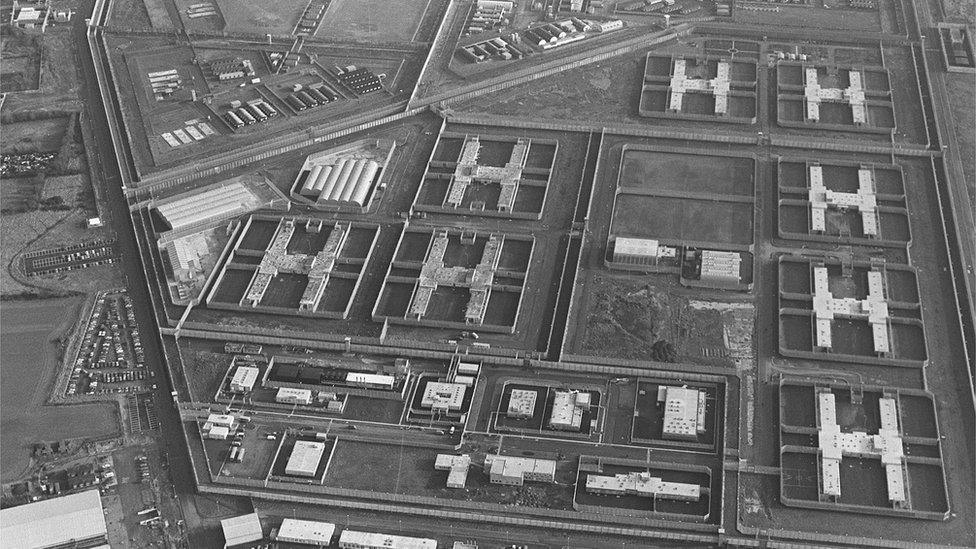
The Maze prison, where republican IRA and INLA inmates died during a hunger strike in 1981

The Balmoral Show is a three-day extravaganza of farming, food and family fun that attracts thousands every year
The Maze prison is one of the building complexes most associated with the Troubles.
Built on an old airfield in the early 1970s, the site was where paramilitary prisoners were held.
Demolition started in 2006 and, as part of redevelopment plans, almost all the H-blocks have been razed to the ground.
A controversial project to transform the Maze prison into a peace centre has been put on hold.
The site is now the home to the Ulster Aviation Society and the Balmoral Show, one of the most important events in Northern Ireland's agricultural calendar.
FREE DERRY CORNER

Army tank passing through a row of houses in the Bogside of Derry-Londonderry
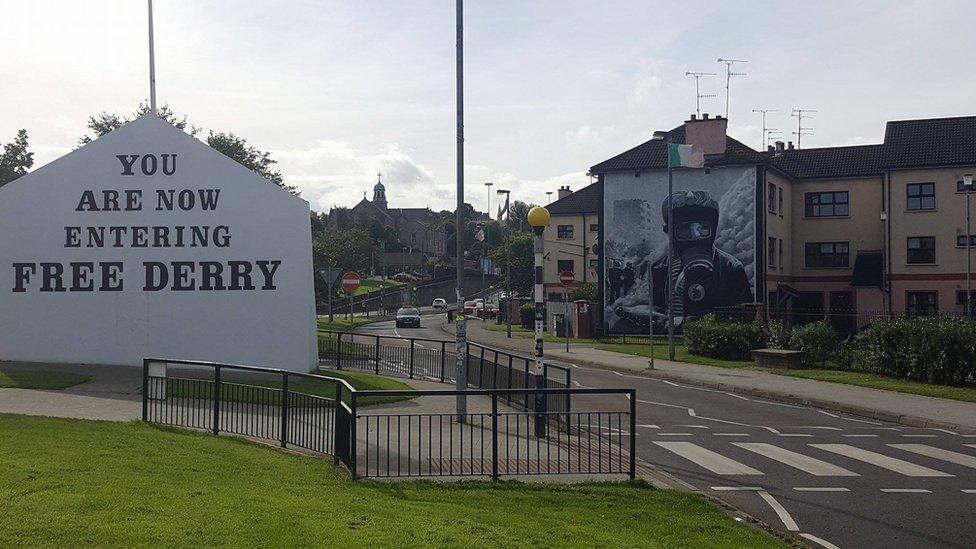
The row of cramped houses have been demolished but the gable wall is still standing
"You are now entering Free Derry" was painted on to the gable wall of a terraced house in the Bogside in 1969.
The wall bearing the landmark slogan is now all that remains of a row of terraced houses.
POLICE STATIONS/BARRACKS
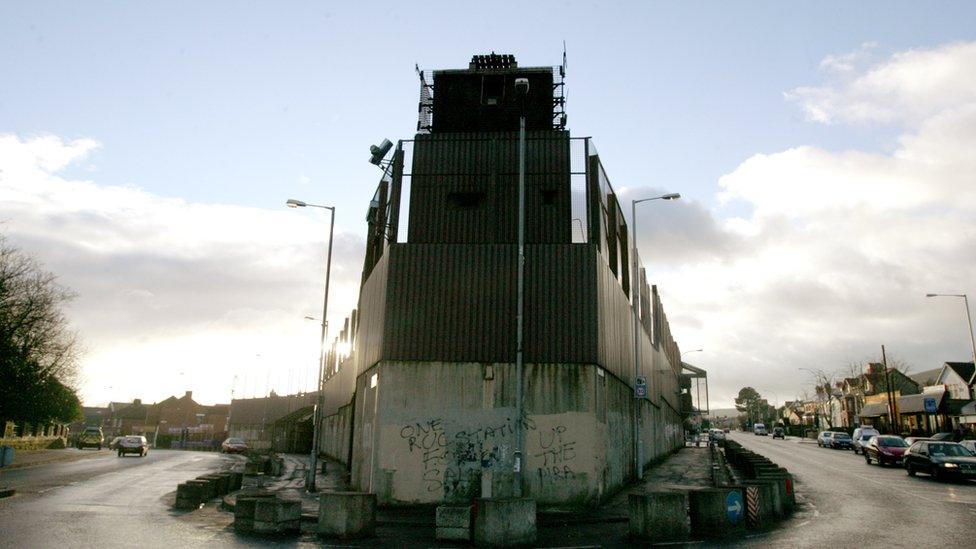
One of the most frequently bombed police stations in Northern Ireland

The former site of the Andersonstown Barracks at the heart of west Belfast is now a green site
As part of the so-called normalisation process in Northern Ireland, many Army barracks and police stations have been demolished.
Andersonstown police station/barracks in west Belfast, prominent during the Troubles, was demolished in 2005.
CROSS-BORDER CHECKPOINTS
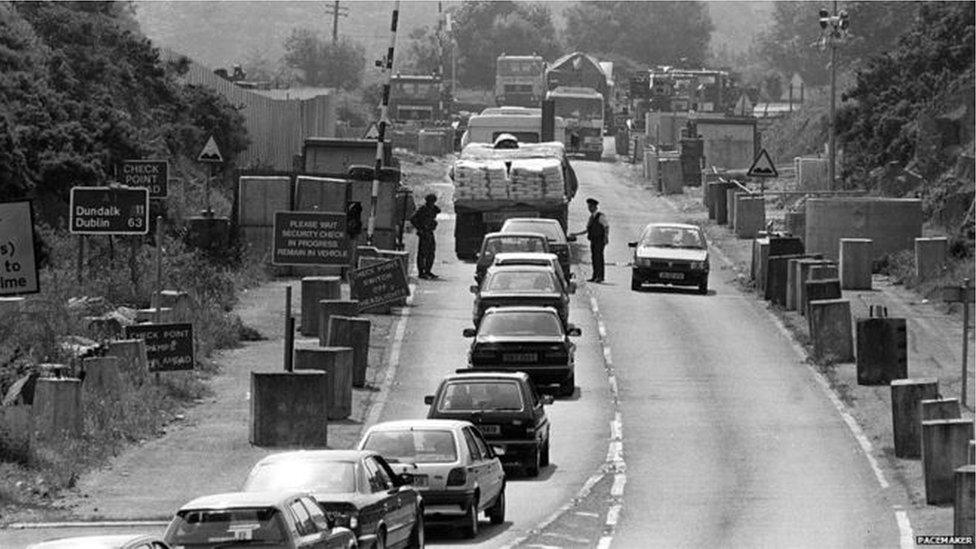
Vehicles leaving Newry, County Down towards the border would pass through a permanent checkpoint
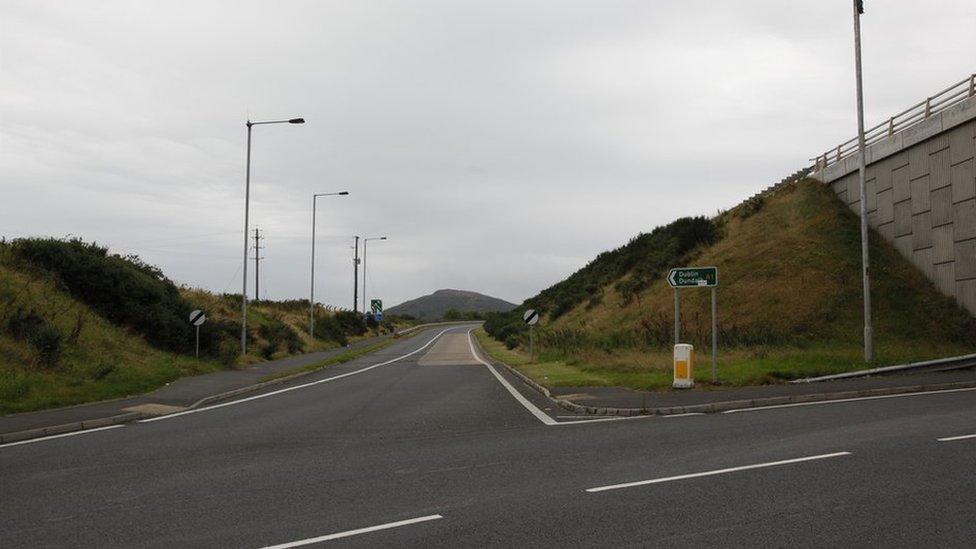
The landscape has changed dramatically, with checkpoints replaced by new roads
People experienced long traffic queues when the so-called hard border between Northern Ireland and the Republic of Ireland necessitated careful ID checks.
MURALS
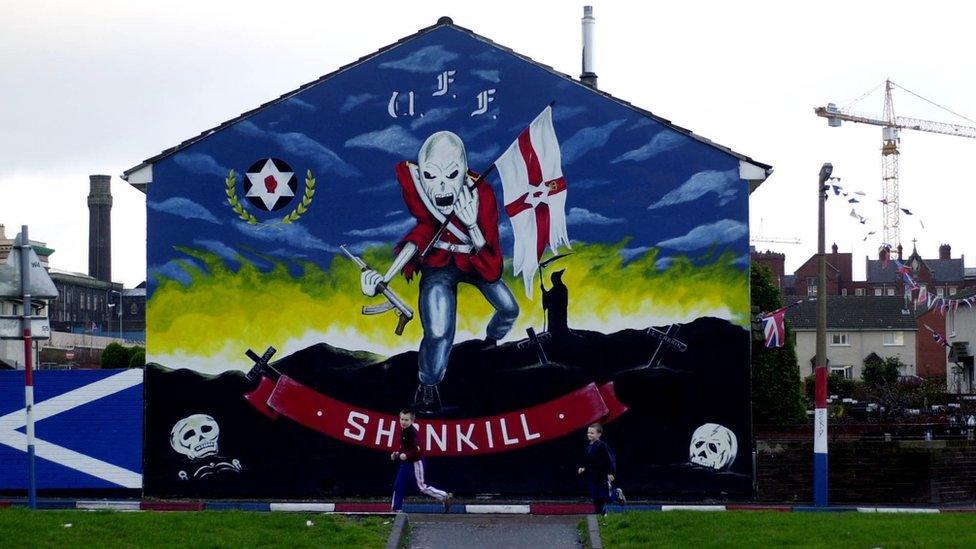
This UFF mural in Belfast's lower Shankill Road was painted over and replaced by a patchwork quilt of words about women
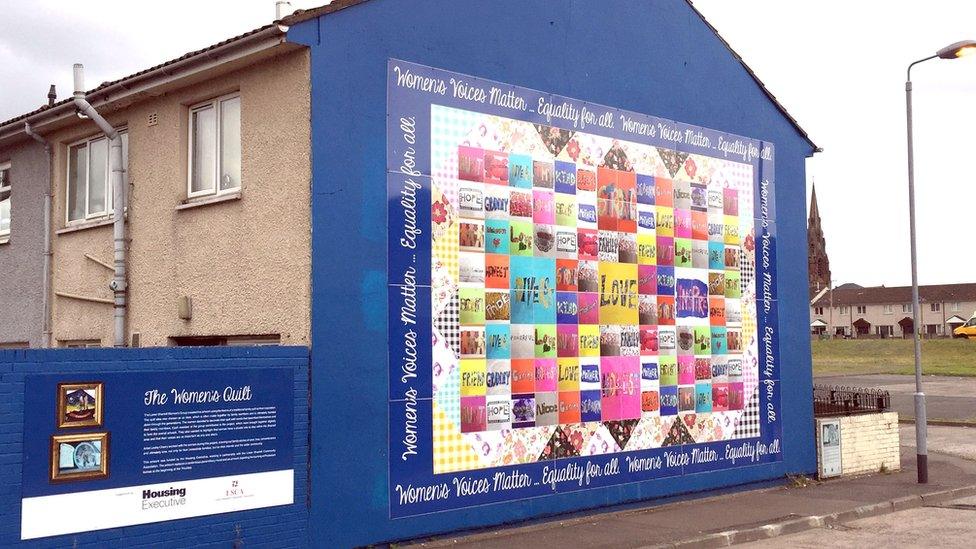
The Lower Shankill Women's Group created this artwork using the theme of a traditional family quilt as their inspiration
Throughout the Troubles both Republicans and Loyalists painted large murals on buildings. There are hundreds of them across Northern Ireland.
Now new murals have sprung up celebrating life in the country.
The UFF mural was painted over and replaced by a patchwork quilt of words about women and the role they play in families and communities.
PEACE WALLS
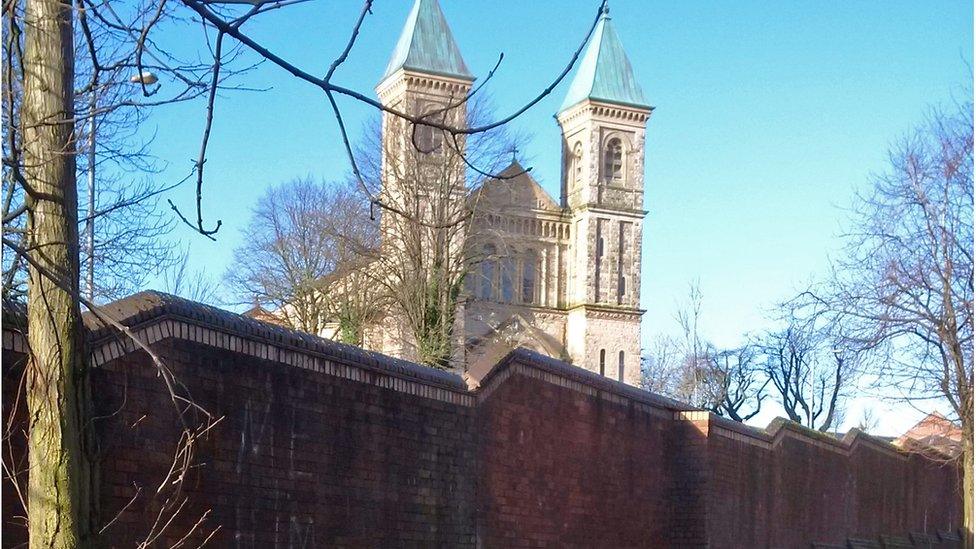
The Crumlin Road peace wall separated Belfast communities for more than 30 years
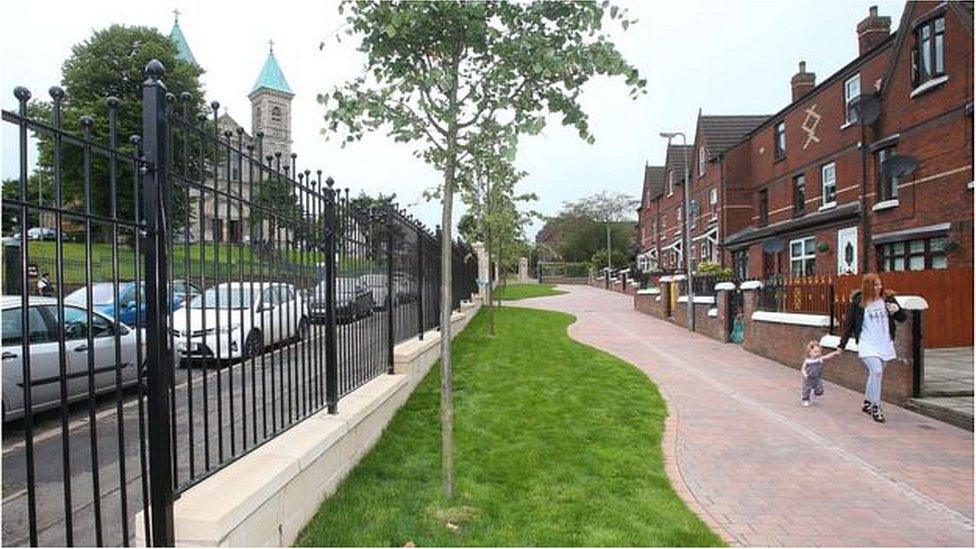
The wall has been replaced by a landscaped pathway, lined with trees and railings, which local residents helped to design.
Permanent walls the so called "peace lines" were built to separate Catholic and Protestant areas of Belfast in the 1970s.
The Crumlin Road wall is both the first wall to be removed; Northern Ireland's power-sharing government has vowed to remove all peace walls by 2023.
- Published31 August 2014
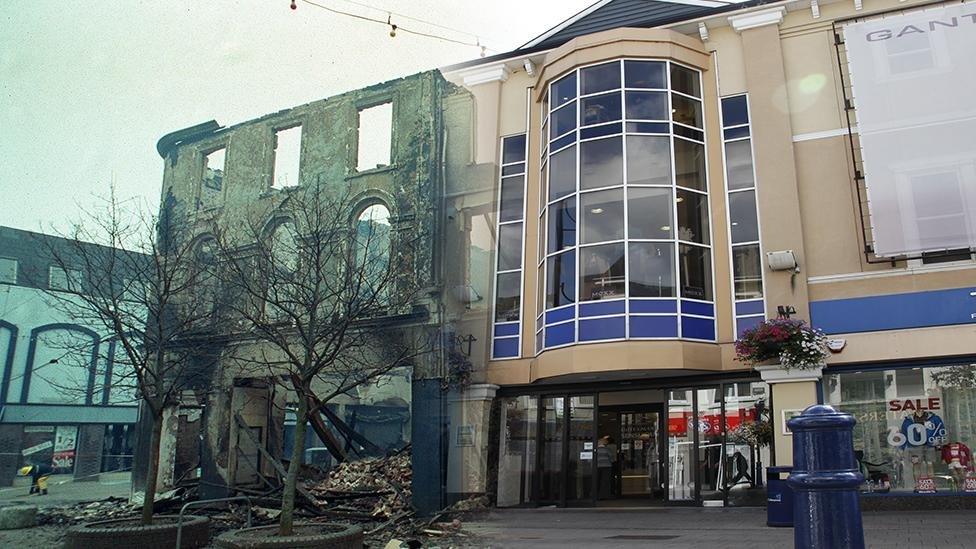
- Published25 February 2016
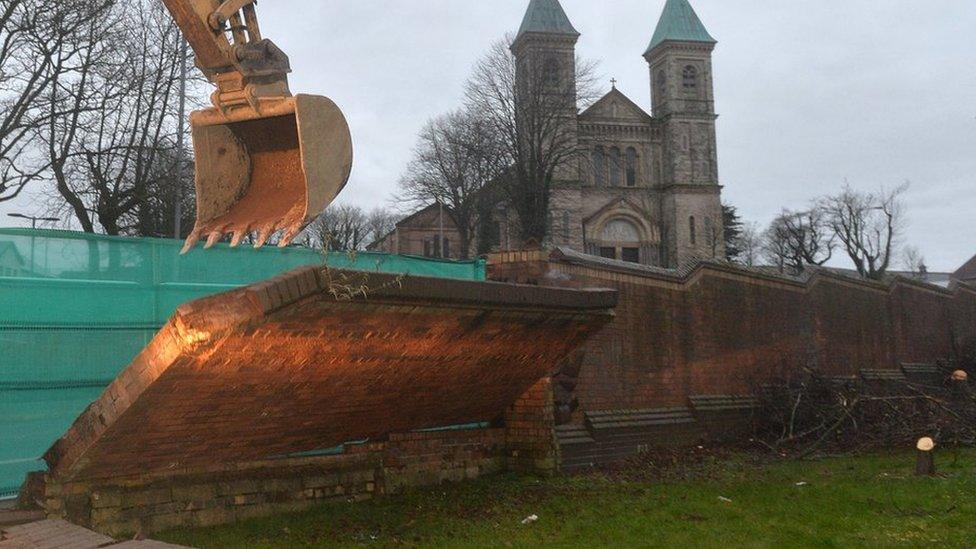
- Published12 November 2011